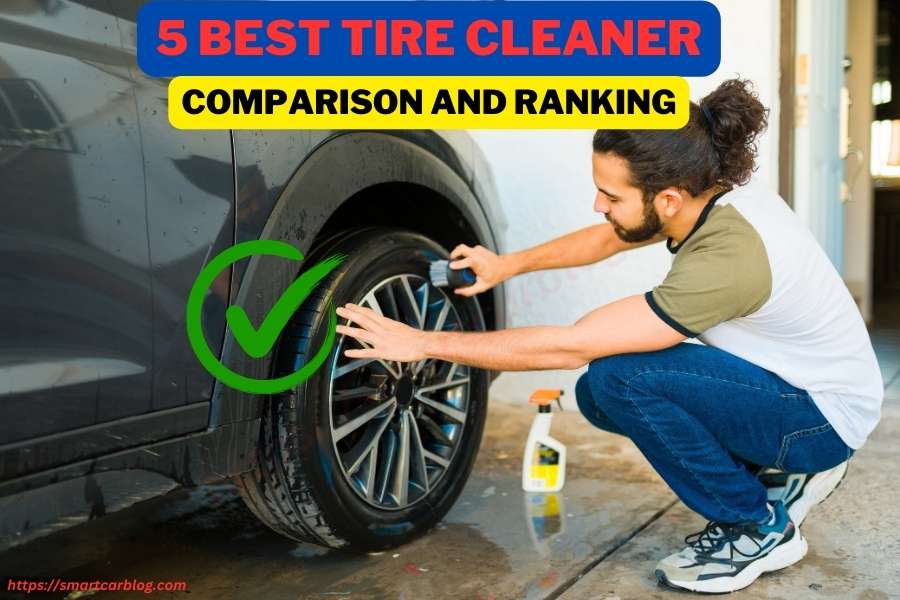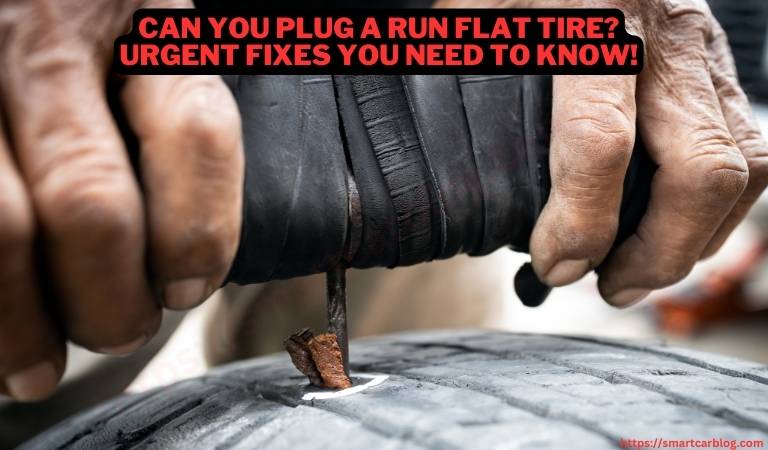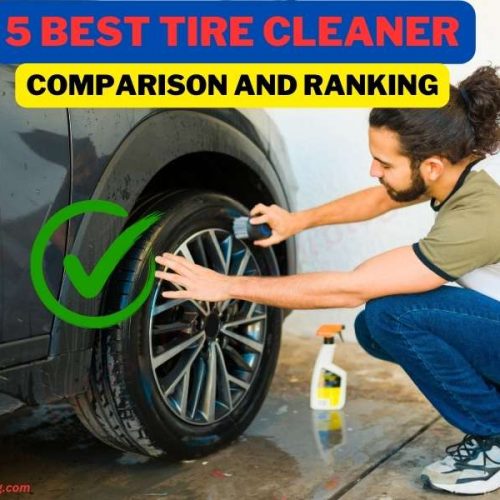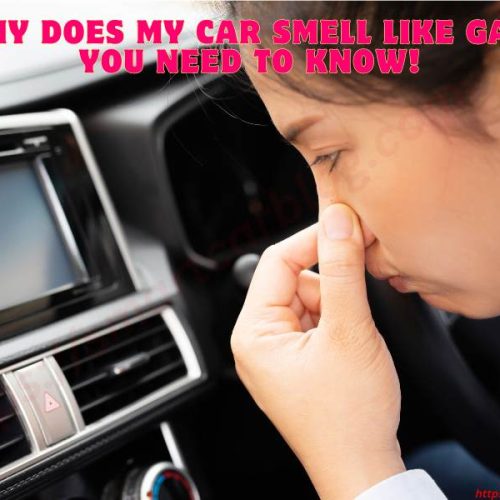✔ Run-Flat Tire Technology Advancements
✔ Defining Run-Flat Tire Technology
✔ Debate on Plugging Run-Flat Tires
✔ Patching vs. Plugging: Pros and Cons
When asked, Can you plug a run-flat tire? It’s a common question among vehicle owners, especially those with run-flat tires on Mercedes, BMW, and other vehicles. Run flat tires represent a significant advancement in automotive technology, offering enhanced safety and convenience for drivers. Unlike traditional tires, run flats are designed to maintain their structure and continue functioning even after a puncture, eliminating the immediate need for a roadside tire change. This innovative feature is a game-changer in tire safety and reliability.
In this comprehensive guide, we explore the feasibility, safety, and best practices for plugging run-flat tires. Whether you’re dealing with a puncture or seeking cost-effective repair solutions, this guide provides valuable answers and guidelines for informed decisions.
Table of Contents
ToggleDefining Run Flat Tire Technology
At the heart of run-flat tire technology lies the ability to withstand a loss of air pressure without collapsing. These tires typically feature reinforced sidewalls or additional supporting structures that enable them to carry the weight of the vehicle, even with zero air pressure.
This structural integrity allows drivers to continue safely to a service station or garage, often for distances of up to 50 miles at reduced speeds, revolutionizing the way we handle tire punctures.
Unique Features of Run Flat Tires
Run flat tires are distinguishable by their robust construction, which includes stiffer and tougher sidewalls. This design is key to their capability to run with no air pressure, ensuring that a punctured tire doesn’t spell immediate disaster. The benefits extend beyond safety,
encompassing space-saving aspects as well, since the need for a spare tire is virtually eliminated. This feature not only saves trunk space but also contributes to fuel efficiency due to reduced vehicle weight.
The Basics of Tire Plugging
The concept of tire plugging is a temporary solution to address tire punctures. In traditional tires, this involves inserting a plug into the punctured area to prevent air loss. This method is widely used due to its simplicity and effectiveness in sealing small punctures, allowing drivers to resume their journey quickly.
What It Means to Plug a Tire?
Plugging a tire is a straightforward process that can often be performed without removing the tire from the vehicle. It involves cleaning the puncture site, inserting a sticky rubber plug, and sealing it in place.
However, it’s crucial to understand that plugging is generally considered a temporary fix. For run-flat tires, the debate on whether plugging is advisable or even possible is a point of contention among experts. This is due to their unique construction and the potential risk of compromising their structural integrity.
The Debate on Plugging Run Flat Tires
The automotive world is divided on the topic of plugging run-flat tires. This debate hinges on whether the unique construction of run-flat tires can accommodate traditional plugging methods without compromising safety or performance.
Can You Plug a Run Flat Tire?
The central question of “Can you plug a run-flat tire?” is not straightforward. While some argue that it is technically possible, others caution against it due to the specialized nature of these tires. The answer largely depends on various factors, including the extent of damage and the specific tire design.
The Pros and Cons of Plugging Run Flat Tires
Pros
- Temporary Fix: Plugging can serve as a quick fix, allowing drivers to reach a professional for a more comprehensive repair safely.
- Convenience: It offers a convenient solution without needing immediate professional assistance.
Cons
- Safety Risks: Plugging may compromise the structural integrity of run-flat tires, potentially leading to safety issues.
- Not a Long-Term Solution: Plugging is generally considered a temporary measure and may not be as durable as professional repairs.
Manufacturer Perspectives on Run Flat Tire Repairs
There is a spectrum of opinions among tire manufacturers regarding the repair of run-flat tires. While some brands provide specific guidelines for limited repairs, others outright discourage any form of plugging due to safety concerns.
Diverse Views from Leading Tire Brands
- Brand A: May suggest limited repairs under specific conditions, emphasizing caution and professional assessment.
- Brand B: Strongly advises against any form of DIY repair, including plugging, citing safety and performance risks.
- Brand C: Offers conditional repair solutions, often under warranty provisions, but with strict limitations on the extent and type of tire damage.
The stance of tire manufacturers on this issue reflects the complexity and variability inherent in run-flat tire technology. As such, vehicle owners are advised to consult with their tire brand or a professional technician before deciding on a repair approach.
Analyzing the Damage: Reparability of Run Flat Tires
Determining the reparability of run-flat tires is a critical aspect of tire maintenance, especially considering their unique design and function. The decision to repair depends on several factors, including the type and extent of damage.
When is Repair Possible?
The ability to repair a run-flat tire primarily hinges on the location and severity of the damage. Punctures in the tread area are generally more repairable than those in the sidewall due to the latter’s role in maintaining the tire’s structure.
Evaluating the Extent of Tire Damage
Key considerations in assessing damage include:
- Size and Position of Puncture: Larger punctures or those located on the sidewall are often deemed irreparable.
- Depth of the Tread: Shallow tread depth may preclude repair due to weakened structural integrity.
- Age and Wear of the Tire: Older or excessively worn tires may not be suitable candidates for repair.
The Risks of Repairing Damaged Run Flat Tires
While repairing a run-flat tire can be a cost-effective solution, it’s important to weigh the potential risks involved.
Potential Hidden Damage and Safety Concerns
- Internal Damage: Run-flat tires may sustain internal damage that is not immediately visible but can compromise safety.
- Integrity of the Tire: Improperly repaired tires can fail, posing a risk to vehicle handling and occupant safety.
- Manufacturer Warnings: Many manufacturers advise against repairs due to the possibility of unseen damage affecting the tire’s performance.
While repair may be possible for run-flat tires under certain conditions, it is essential to undertake a thorough assessment and consider manufacturer guidelines and safety implications before proceeding.
Inspection and Repair Procedures
Proper inspection and repair procedures are crucial for maintaining the integrity and safety of run-flat tires. Understanding these processes is key to ensuring the longevity and performance of these specialized tires.
Steps for Inspecting Run Flat Tires
Essential Inspection Points Before Repair
- Check for Sidewall Damage: Damage here often means the tire is irreparable.
- Identify the Puncture Site: The location and size of the puncture significantly influence reparability.
- Assess Tread Depth: Low tread depth can compromise the effectiveness of any repair.
- Look for Internal Damage: Internal inspection is crucial as external signs of damage can be misleading.
Patching vs. Plugging: Best Practices for Run Flat Tires
When dealing with run-flat tires, understanding the best practices for repairs is essential. The decision between patching and plugging can impact both the performance and safety of the tire.
Patching Run Flat Tires
Patching tire is often recommended for run-flat tires due to its comprehensive approach to sealing punctures. It involves placing a patch on the inside of the tire, which effectively seals the damaged area. This method is generally considered safer and more reliable than plugging because it maintains the structural integrity of the tire, which is crucial for running flats.
Plugging Run Flat Tires
Tire Plugging, while a quicker fix, is less favored for run-flat tires. It involves inserting a plug into the puncture from the outside. While convenient, this approach may need to address internal damage adequately and can compromise the tire’s strength. Furthermore, many manufacturers advise against plugging run-flat tires, citing concerns about long-term durability and safety.
Advantages of Patching Over Plugging
- Durability: Patches provide a more durable solution compared to plugs.
- Safety: Patching is generally safer, as it better maintains the tire’s structural integrity.
- Manufacturer Approval: Many tire manufacturers prefer patching over plugging for run-flat tires.
- Longevity of Repair: Patch repairs tend to last longer and are less likely to compromise the tire’s performance.
Note: Ultimately, patching is the preferred method for repairing run-flat tires. It aligns with manufacturer recommendations and ensures a more secure and lasting repair, preserving the unique benefits of run-flat technology.
Brand-Specific Run Flat Tire Repair Guidelines
Navigating the repair guidelines for run-flat tires can be challenging, especially as recommendations vary across different tire brands. Understanding these brand-specific policies is key to ensuring proper tire maintenance.
Repair Policies of Major Tire Brands
Guidelines from Michelin, Bridgestone, Continental, Goodyear, Pirelli
- Michelin: Often suggests professional assessment, with repairs limited to certain conditions.
- Bridgestone: This may allow repairs but emphasizes the need for thorough inspection and adherence to safety standards.
- Continental: Generally advises against DIY repairs, recommending professional service for safety.
- Goodyear: Stresses the importance of evaluating tire condition and may permit limited repairs.
- Pirelli: Typically recommends replacement over repair, especially in cases of significant damage.
When to Avoid Repairs
Situations Where Repair is Not Advisable
- Severe Sidewall Damage: This can compromise the tire’s structural integrity.
- Large Punctures: Larger than standard limits for repairable punctures.
- Repeated Repairs: Multiple repairs can weaken the tire over time.
- Aging Tires: Older tires may not be safe to repair due to material degradation.
While some repairs on run-flat tires are possible, they are often subject to strict conditions and guidelines set by manufacturers. Always consult with a professional and consider the tire’s overall condition before proceeding with repairs.
Final Recommendations and Best Practices
When it comes to run-flat tires and punctures, making informed decisions is crucial. Here, we present expert advice and best practices for handling punctured run-flat tires to ensure both longevity and safety.
Expert Advice on Handling Punctured Run Flat Tires
Making the Right Decision After a Puncture
- Assessment Matters: Always assess the severity and location of the puncture. This informs whether repair or replacement is the best course of action.
- Consult Professionals: Seek advice from tire experts or the manufacturer to align with their specific recommendations.
- Prioritize Safety: Safety should be paramount. Don’t compromise on it, especially when dealing with run-flat tires.
Longevity and Safety Considerations
Ensuring the Durability and Performance of Repaired Tires
- Regular Inspections: Periodically check the repaired tire to ensure it’s holding up well.
- Monitor Tire Pressure: Maintain recommended tire pressures to extend tire life.
- Replace When Needed: If safety is ever in doubt, opt for replacement over repair.
- Follow Manufacturer Guidelines: Always adhere to the guidelines provided by the tire manufacturer for maximum safety and longevity.
Expert advice and best practices for handling punctured run-flat tires emphasize a cautious and safety-first approach. Make well-informed decisions to ensure the durability and performance of your repaired tires.
Final thought: can you plug a run-flat tire?
In summary, the question of whether you can plug a run-flat tire remains a complex topic. While plugging is possible in some cases, it’s crucial to consider factors like tire damage, manufacturer guidelines, and safety concerns.
Expert advice often leans towards patching over plugging for run-flat tires to ensure durability and safety. Always prioritize safety and consult professionals for the best course of action when dealing with punctured run-flat tires.
FAQ: can you plug a run-flat tire?
Q: Can you plug a run-flat tire on a Mercedes?
A: Yes, it’s possible to plug a run-flat tire on a Mercedes, but it’s crucial to follow manufacturer guidelines and consider safety.
Q: Can you repair a run-flat tire with a nail in it?
A: Repairing a run-flat tire with a nail in it is feasible, but a professional must evaluate the extent of damage and tire condition.
Q: Can you patch a run-flat tire on a BMW?
A: Patching a run-flat tire on a BMW is an option if the damage is within repairable limits and adheres to manufacturer recommendations.
Q: Can you plug a Bridgestone run-flat tire?
A: Plugging a Bridgestone run-flat tire may be possible, but it’s essential to consider the type and location of damage and always prioritize safety.
Q: Can you plug a flat tire?
A: Yes, flat tires can often be plugged, but whether it’s advisable depends on the type of tire and the extent of damage.
Q: What’s the run-flat tire repair cost?
A: The cost of repairing a run-flat tire varies depending on the extent of damage and whether it’s a patch or plug repair. It’s best to consult a professional for an accurate estimate.
Q: Can you plug a Michelin run-flat tire?
A: Plugging a Michelin run-flat tire is possible in some cases, but always refer to Michelin’s guidelines and consider safety implications.
Q: Are run-flat tire repairs permanent?
A: Run-flat tire repairs, whether plugged or patched, are generally considered temporary solutions. They should be followed by a more permanent fix or tire replacement.
Q: Is it safe to drive on a plugged-run flat tire?
A: While driving on a plugged-run flat tire is possible, it’s advisable to limit speed and distance and seek professional repair or replacement as soon as possible.
Q: What are the risks of not repairing a run-flat tire?
A: Not repairing a run-flat tire can lead to further damage, loss of tire integrity, and safety risks. It’s important to address punctures promptly to maintain tire performance.




 Welcome to SmartCarBlog.com! I’m Rashel Miajee, The proud founder of smartcarblog.com. This is a part of
Welcome to SmartCarBlog.com! I’m Rashel Miajee, The proud founder of smartcarblog.com. This is a part of 


